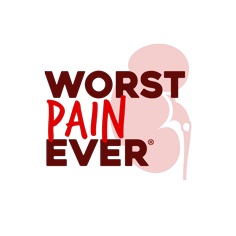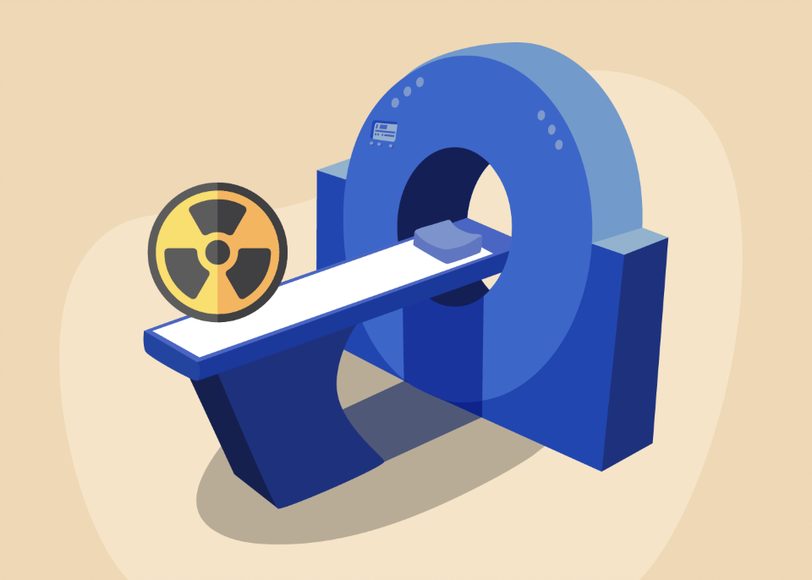CT (computerized tomography) scans are one of the imaging techniques commonly used to diagnose kidney stones. It uses ionizing radiation, which has stoked fears among recurrent stone formers, who undergo multiple CT scans in a year. Here’s why you shouldn’t worry too much, and what to do about it.
What is radiation?
Radiation is something we have learned to fear and it can be harmful in extremely large doses, but it’s important to first know what radiation is. According to the Center for Disease Control and Prevention (CDC), radiation is energy with an electric and magnetic field that travels at the speed of light1.
Radiation is known to cause cancer by altering a person’s cells, but the amount needed to cause cancer is very large. The risk of cancer from radiation exposure becomes significant only if a person is subjected to numerous tests. You may not realize, but we are exposed to radiation every day from gases in our homes and cosmic rays from space. The amount of radiation we are exposed to daily depends on where we live.
According to the American Cancer Society, the average person in the United States is exposed to approximately 3 mSv of radiation per year from natural sources2. The amount of radiation from imaging tests varies depending on factors such as the type of imaging, age, gender, the body part being examined, and the equipment used.
Why does my doctor order CT scans, even though it exposes me to radiation?
Everything in the medical field has possible risks and benefits. When a healthcare provider orders a test, procedure, or medication, they weigh the risks against the benefits.
CT scans use X-rays to obtain images of the inside of the body, such as that of your kidney stones. By combining several X-ray images to create a 3-D image, it produces a far more detailed scan than a regular X-ray. This gives healthcare providers a better picture of what is going on inside your body and helps them decide on the best treatment plan.
According to the United States Food and Drug Administration (FDA), the approximate radiation from a CT scan ranges from 1 to 25 mSv3.
Adults have fewer risks from radiation exposure than children and those 60 and older are less susceptible to the effects of radiation exposure.
I’m still worried. What can I do?
If you are concerned about radiation from kidney stones testing, you should discuss it further with your healthcare provider. Some potential questions can be: I am concerned about radiation exposure, is this imaging test the best option for me? What is your view on the risk of exposure given my medical history? Can you explain to me how this aids in my kidney stones treatment?
Your healthcare provider may recommend an ultrasound as an alternative for kidney stone imaging, but note that stone sizing and location may not be as accurate as a CT scan5.
We hope that you feel more empowered to have open discussions with your healthcare provider as we all partner to drive better healthcare outcomes!
Sources:
-
Centers for Disease Control and Prevention. (2015, December 7). Radiation studies: CDC – what is radiation? Centers for Disease Control and Prevention. Retrieved May 20, 2022, from https://www.cdc.gov/nceh/radiation/what_is.html
-
Understanding radiation risk from imaging tests. American Cancer Society. (n.d.). Retrieved May 17, 2022, from https://www.cancer.org/treatment/understanding-your-diagnosis/tests/understanding-radiation-risk-from-imaging-tests.html
-
FDA. (n.d.). What are the radiation risks from CT? U.S. Food and Drug Administration. Retrieved May 18, 2022, from https://www.fda.gov/radiation-emitting-products/medical-x-ray-imaging/what-are-radiation-risks-ct
-
RSNA and ACR. (2021, February 8). I’ve had many CT scans. should I be concerned? Radiologyinfo.org. Retrieved May 18, 2022, from https://www.radiologyinfo.org/en/info/safety-hiw_08
-
Brisbane, W., Bailey, M. R., & Sorensen, M. D. (2016). An overview of kidney stone imaging techniques. Nature reviews. Urology,13(11), 654–662. https://doi.org/10.1038/nrurol.2016.154





